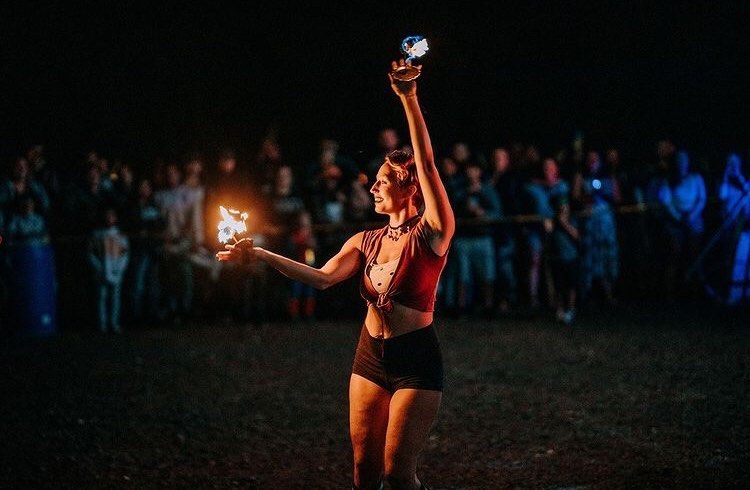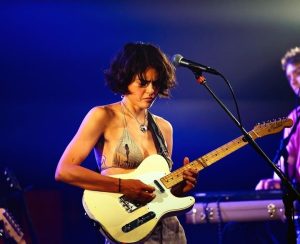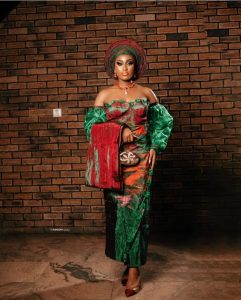Last Updated on December 5, 2023 by Sharon Advik
In the dim glow of twilight or the moody ambiance of a cozy café, capturing the perfect shot is about embracing the shadows.
Enter the realm of Canon’s low-light champions!
These lenses are like nocturnal creatures, pulling in every photon and turning near-darkness into photographic gold.
Whether you’re a street photographer chasing midnight stories or a portrait lover seeking that soft, intimate glow, Canon has a lens that’ll make you say, “Who needs daylight?”
Dive in and uncover the best Canon lens for low-light photography.
Which are the Best low light lens for Canon?
Here are my recommended top 10 Best low light lens for Canon:-
Canon EF 16-35mm f/2.8: (Wide and fast. Great for small indoor spaces)
So, get this: I got this call to shoot in a library last year.
Not just any library, but one older than our grandfather’s beard!
With creaky wooden floors and the kind of books you’d expect a wizard to own.
The catch was that the library had almost no light, just these dreamy sunbeams sneaking in through old stained-glass windows.
I grabbed my Wide-Angle Zoom lens – Canon EF 16-35mm f/2.8, which, honestly, felt more like my wingman for the day than just a lens.
Here’s what went down:
Ultra-wide field of view.
Imagine trying to get this expansive library’s awesomeness in one shot.
Those wide shelves, artsy ladders, and all those nooks and crannies. This lens?
It was like it had a built-in panoramic vision.
The shoot went on for hours, and shots came without annoying distortions, just pure, unadulterated library goodness.
Fixed f/2.8 aperture.
The light was tricky – just some playful beams doing the peek-a-boo through colored glass.
But with this lens, it was like having a secret key to the library’s light dance.
Even those shadowy spots turned out clear and moody.
And with fancy SWC and Air Sphere features?
I got zero glare.
Sharp throughout the zoom range
Details, details, details.
This lens caught it all, from the scribbles on an old note to the grain on the library desks.
Whether I was capturing the entire room’s vibe or zooming in on an old librarian’s spectacles, it stayed sharp.
Those UD and Aspherical Elements were absolute game-changers.
Why is this lens best for low-light photography?
In spots where you can’t just pop open a light or flash (you don’t want to be that person in a library), the Canon EF 16-35mm f/2.8 is the hero you didn’t know you needed.
It drinks up whatever light’s there and makes your pics shine.
And hey, if you’re in a drizzle outside, that weather seal’s got your back.
It’s wide and fast and great for small indoor spaces.
Conclusion
Every shoot’s an adventure.
But in a setting where every shadow’s got a tale and light’s playing hide and seek, you want a lens that’s got your back. My Canon?
It was like having a chatty assistant, eager and ready, turning a challenging gig into a walk in the park.
Well, it’s a very quiet, book-filled park.
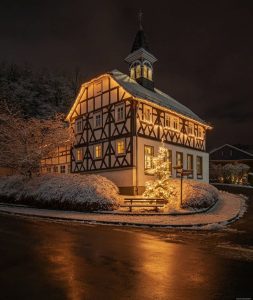
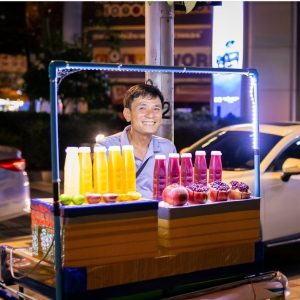
Canon EF-S 17-55mm f/2.8: (Great, fast, generally purposeful lens to use as a walk-around)
One autumn evening, I was handed a peculiar assignment.
For his gardening website, a client wanted me to photograph a garden under the soft light of a full moon.
It sounded like a page from a fantasy novel.
I ventured in with the path illuminated only by the shimmering moon and the occasional fireflies.
At first glance, it seemed impossible.
How do you capture the allure of a silent garden bathed in moonlight?
But then, my Standard Zoom Lens – Canon EF-S 17-55mm f/2.8 gave me a knowing look, and our nocturnal adventure began.
Very sharp at wider angles
In the heart of the garden stood a centuries-old willow tree.
Its expansive branches danced gracefully in the gentle night breeze.
I needed a lens that could embrace its grandeur fully.
Turning to the wider angles, I could encapsulate the willow and its ambiance.
The Aspherical Elements worked wonders, producing sharp images that felt like the tree was whispering its tales into my ears.
Fast aperture
Let’s be honest: moonlight is enchanting, but it’s no match for the bright sun.
However, the f/2.8 aperture of this lens became my savior.
Each shot felt like I was painting with moonbeams.
Flowers bathed in silver light, dewdrops looked like tiny pearls, and the Super Spectra Coating ensured that even the shyest details weren’t lost in the shadows.
Minimal distortion
The garden’s old stone pathways, bordered with wildflowers, meandered mysteriously into the woods.
While nature doesn’t always align with our geometric preferences, the lens ensured minimal distortion.
Every shot maintained the garden’s raw, wild essence without making it look chaotic.
It was a fantastic time with this incredible, fast, general-purpose lens to use as a walk around.
Why is this lens best for low-light photography?
But why is this Canon EF-S 17-55mm lens a masterpiece for low-light settings?
The answer lies in its perfect marriage of technology with artistry.
The Optical Image Stabilizer ensures that even in the fragile light, every image is crisp, every memory untouched by blurs or shakes.
Conclusion
Photography isn’t just about capturing images; it’s about capturing moments, moods, and mysteries.
In that moonlit garden, with the world asleep and nature singing its soft lullabies, my camera and I unearthed stories hidden in plain sight.
With the right companion, magic isn’t just possible; it’s guaranteed.
Canon EF-S 24mm f/2.8: (Super small, compact, and sharp for APS-C Canons)
It was the kind of place that didn’t advertise.
I was assigned to capture the lives of poets and dreamers for a famous magazine.
The cafe was away in a city’s cranny; it was a refuge for dreamers and poets.
It was a special place with no electric lights, just an array of mismatched candles casting dancing shadows on vintage wooden tables.
The challenge was real!
But as the flame’s gentle flickers played on the faces of the café-goers, revealing stolen smiles and lingering glances, I knew this was a playground for my Short-length Prime Canon EF-S 24mm f/2.8 Lens.
The small, unassuming lens seemed to understand the place’s soul instantly.
Quite sharp – Very compact
This lens has an uncanny ability: while incredibly compact, it delivers impressively sharp results.
In the dim café, each candlelit face was captured with crisp clarity.
The lone Aspherical Element played its part, ensuring that even in those cozy confines, every emotion, every wrinkle of time etched on the tables, stood out vividly.
Classic wide-angle field of view
The café was small, every corner whispering stories of love, loss, and dreams.
With its classic wide-angle field of view, this lens allowed me to encapsulate subjects and their surroundings, weaving a narrative of intimacy amidst vintage charm.
The 38.4mm equivalent gave me the privilege of closeness and context, a painterly blend of focus and ambiance.
Silent STM focus motor – Affordable
Between the clinking of coffee cups and soft jazz tunes, the STM Stepping AF Motor was a godsend.
Stealthy, silent, ensuring every stolen moment was frozen without a hint of intrusion.
Plus, given its affordable price, it felt like the universe’s saying, “You don’t always have to break the bank for brilliance.”
Why is this lens best for low-light photography?
Low light isn’t just about managing shadows but respecting the ambiance.
The f/2.8 aperture of this lens embraces dim settings, making the most of what’s available.
And the Super Spectra Coating?
Let’s say it’s like having a magic wand that wards off flares and ghosting, keeping the mood intact.
Conclusion
Sometimes, it’s not about the most significant gear but the right one in photography.
That evening, as stories unraveled in a candlelit cocoon, my Canon EF-S 24mm f/2.8 wasn’t just a tool but a storyteller.
Every frame it captured was a photograph and a sonnet of shadows, light, and life.
Let’s say it’s a super small, compact, and sharp lens for APS-C Canons.

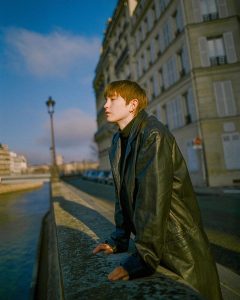
Canon 24-70mm f/2.8: (Wedding photographer’s favorite general-purpose full frame)
The sun had just set over the Grant Estate, a dreamy venue for Megan and Tom’s wedding.
A symphony of twinkling fairy lights, soft lanterns, and distant stars painted a romance scene.
This dim, ethereal setting would be a nightmare for any photographer.
But it felt like the playground where my trusty Canon L-series Zoom 24-70mm f/2.8 lens and I could work wonders.
Sharp throughout the zoom range.
The evening’s beauty lay in its moments – fleeting, tender, raw.
Megan’s eyes twinkled brighter than those fairy lights, and Tom’s nervous hands steadied with his soon-to-be wife’s touch.
With its fantastic sharpness across the entire zoom range, this lens allowed me to capture everything, from the venue’s grandeur to the beautiful detailing on Megan’s dress.
The One Super UD Element and Two UD Elements played their role seamlessly, ensuring pristine clarity.
Constant f/2.8 aperture.
Low-light scenarios can be tricky, but with a constant f/2.8 aperture, the world felt different.
This feature was a savior, pulling in all available light and transforming it into vivid pictures that’d make you gasp.
The soft glow of lanterns, the shimmer of candles on tables, the laughter echoing in dimly lit corners – all rendered flawlessly.
Those Three Aspherical Elements?
They were ensuring aberrations remained a non-issue.
Fairly compact
Weddings are dynamic.
One moment, you capture the couple’s first dance, and the next, you rush to the kids’ corner, where a mini-drama unfolds.
The lens’s relatively compact design made swift transitions and easy maneuverability possible.
Plus, the weather-sealed construction meant a sudden drizzle only added to the romantic allure without causing a gear-fret.
Why is this Lens Best for Low-Light Photography?
It’s more than just specs.
It’s about how a lens feels in your hand and responds to the world.
The ring-type ultrasonic motor AF system guarantees swift, silent, and sharp focusing.
Combine that with the rounded 9-blade diaphragm, and you get bokeh-filled shots that scream magic even in low light.
Conclusion
I felt content as I packed up amidst the fading music and joyous goodbyes.
Another love story told in a cascade of images.
Nights like these remind me of the power of the right gear, the magic of light, and the timeless allure of love.
The lens?
It is a tool and a wedding photographer’s favorite general-purpose full frame.
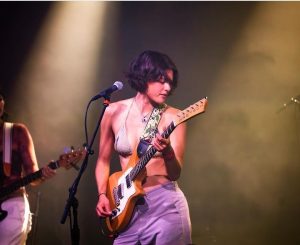

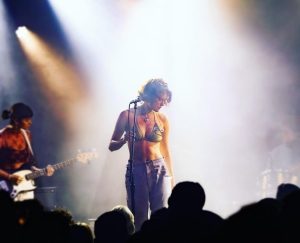
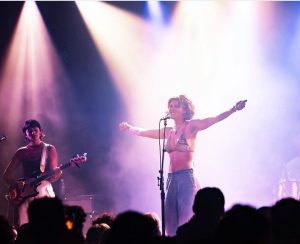


Canon EF 50mm f/1.4: (Super fast for low-lighting subjects. Cheap and light)
The last rays of the sun had just receded, giving way to a tranquil twilight.
On assignment for a renowned travel magazine, I was amidst the towering trees of Whispering Woods.
Their brief was to capture the essence of the forest at dusk.
It’s an environment where photographers might feel a pinch of trepidation – low light, shifting shadows, fleeting moments.
On the contrary, I was invincible with my Normal-length Prime Canon EF 50mm f/1.4 lens.
It’s cheap and light, and it doesn’t let you compromise on the quality.
Sharp Detail
Every frame I took was a revelation.
The textures of the bark, the patterns of the leaves, and even the distant
silhouettes of animals were all captured with impeccable sharpness.
The lens’s Two High Refractive Index Elements did their magic, ensuring that every shot was crisp, detailed, and defined.
It felt like the woods whispered their secrets, and my lens perfectly translated that into impeccable imagery.
Internal Focus Motor
There’s something about a forest that demands silence, an unspoken reverence.
The last thing I wanted was the noise of a lens hunting for focus.
Thankfully, the Micro Ultrasonic Motor AF System was on my side.
Swift, silent, and precise, it allowed me to lock onto my subjects seamlessly while ensuring I remained a silent observer in this magnificent setting.
Fast aperture -Affordably priced
As the night started to spread its cloak, I was undeterred.
The f/1.4 aperture was an absolute boon, pulling in whatever scant light was available and turning it into art.
I was getting shots that were bright, full of depth, and imbued with the very soul of the forest.
And the best part?
This kind of excellence didn’t burn a hole in my pocket.
Quality and affordability are harmoniously married.
Why is this Lens Best for Low-Light Photography?
Low light is more than just a condition; it’s an opportunity to see the world differently.
With the Rounded 8-blade Diaphragm, this lens renders a beautiful bokeh, making subjects pop amidst dreamy backgrounds.
The Super Spectra Coating ensures minimized flare and ghosting, making each shot feel ethereal.
Conclusion
When I left the woods that night, I had more than just photographs.
I had memories, experiences, and tales of a forest that conversed in hushed tones.
With the right lens, the world isn’t just seen; it’s felt and remembered.
And that night, amidst the Whispering Woods, I aced the project with this lens; it’s fast for low-lighting subjects.
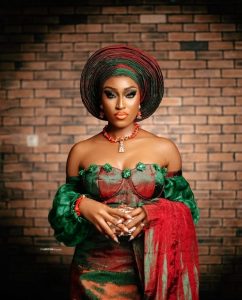


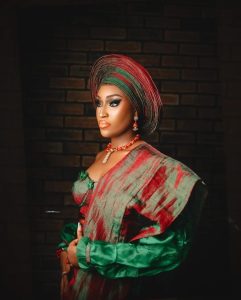
Canon EF 85mm f/1.8: (Professional portraits at a budget entrance point)
Late one evening, in the heart of the bustling city, I was approached by a rising theatre actor.
She wanted a series of portraits that weren’t staged with traditional lighting but embraced the ambient glow of the city’s nightscape.
The challenge was to unveil her character amidst the unpredictable blend of neon signs, passing cars, and dim streetlights.
It sounded like an adventure, and my Standard & Medium Telephoto Canon EF 85mm f/1.8 Lens was ready for the spotlight.
Very sharp – Optical stabilization
Navigating the inconsistent luminance, the first feature I leaned into was the lens’s sharpness.
I marveled at every click’s stunning clarity and detail, especially given our moody environment.
The Super Spectra Coating ensured every shot lacked flares and ghosting, even when the city’s lights tried their hardest to intervene.
Paired with optical stabilization, blurry shots from accidental shakes were almost nonexistent.
Dust and splash resistant – Fluorine lens coat
A drizzle began as the night wore on, casting reflective hues.
While most would consider it a wrap, my lens felt invincible with its splash-resistant feature.
The Fluorine lens coat kept the raindrops at bay, ensuring no speck of water blurred our vision.
And, as we moved through dust-laden alleyways and breezy rooftops, the lens held its ground, ensuring every portrait retained its pristine quality.
Relatively light and compact
One of the joys of this project was its spontaneous nature – hopping from cafes to bridges, alleyways to rooftops.
The Canon’s lightweight design became a blessing.
Without the burden of a heavy setup, I could get into the groove, experimenting with angles, chasing lights, and ultimately, bringing our shared vision to life.
Why This Lens Is Best for Low Light Photography
Shooting in low light is an art of patience, intuition, and having the right equipment.
The f/1.8 aperture of the Canon EF 85mm is a star player, allowing generous amounts of light in and rendering creamy bokeh, making subjects stand out beautifully.
The Rounded 8-blade Diaphragm contributes to this effect, delivering portraits with a dreamy touch.
In essence, when the world dims, this lens shines.
It is perfect for professional portraits at a budget entrance point.
Conclusion
We wrapped up our session as dawn approached, and the city began to stir.
With a camera full of memories and a heart full of gratitude, I realized that every frame was more than just a portrait – it was a story of resilience, art, and the Canon EF 85mm magic.
A night to remember, indeed.

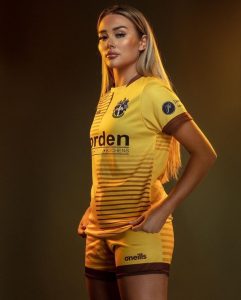
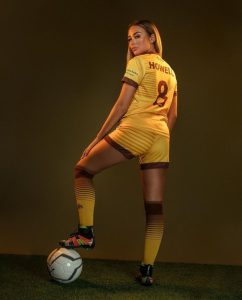



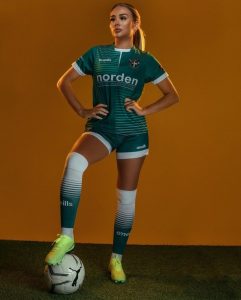
Canon EF 100mm f/2.8 Macro: (Superior portrait and macro lens)
There was an enchantment to dusk that evening as I set up my studio in the city’s heart.
I had been commissioned for a unique task: capture the sheer portrait of vintage jewelry under the soft glow of lantern lights.
The venue was intimate, the lighting challenges tangible, and my Short Telephoto Prime Canon EF 100mm f/2.8 whispered promises of magic to come.
Sharp images
Every jewel has a story.
And to capture it, clarity is paramount. Using the Canon EF 100mm f/2.8, each shot revealed minute details that would’ve otherwise been lost.
The One Ultra-Low Dispersion Element ensured chromatic aberrations were a thing of the past.
From the intricate weaves of a golden necklace to the microscopic imperfections in a diamond, this lens unveiled them all, bearing testament to the artistry and history encapsulated in each piece.
1:1 magnification
I was drawn to the lens’s macro capabilities as the night progressed.
With its 1:1 Magnification and 11.8” Min.
Focus, I was no longer just capturing jewelry; I was venturing into a world of artistry on a miniature scale.
Tiny etchings on a pendant, the delicate gradations of color in gemstones, and even the almost invisible craftsmanship were revealed in all their glory, transporting onlookers into the very heart of each creation.
Inexpensive
For most, the expectation is clear: superior results require hefty investments.
However, this superior portrait and macro lens defies this logic.
Its ability to render breathtaking photos, comparable to lenses twice or thrice its price, makes it a darling among professionals.
Given its performance and features, especially in challenging conditions, it’s a pocket-friendly titan in photography.
Why Is This Lens Best for Low-Light Photography?
Low-light conditions can be unpredictable.
But with the Canon EF 100mm f/2.8, it felt like I was wielding a wand rather than a lens.
The f/2.8 Aperture proved pivotal, allowing ample light and rendering a soft, ethereal bokeh.
Add to that the Optical Image Stabilizer, and even in the dimmest conditions, blurry shots were nearly nonexistent.
If you often get tangled in tricky photography gigs, I highly recommend you buy this lens.
Conclusion
It’s not just about capturing images; it’s about capturing moments, memories, and sometimes, if you’re lucky, a little magic.
And with the Canon EF 100mm f/2.8 by my side, magic is always just a click away.
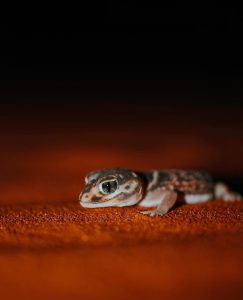

Canon 70-200mm f/2.8: (The staple lens for portrait photographers. Works for close sports)
In the serene ambiance of a heritage opera house, I was tasked with capturing candid portraits of ballet dancers during their final rehearsal.
The glow of vintage bulbs, fused with muted stage lights, cast a dreamy hue.
It wasn’t just any rehearsal; the performance was dedicated to a legendary ballerina.
As the dancers moved, emotions etched on their faces, I realized the challenge wasn’t just the dim light but capturing the soul of the dance.
My trusted companion for the day, unmentioned but undoubtedly a hero, was the Telephoto Zoom Canon 70-200mm f/2.8 lens.
Sharp from edge to edge – Optically stabilized.
Its Four Ultra-Low Dispersion Elements produced portraits so vivid each frame narrated a story.
From the subtle expression of a dancer to the intricate details of their attire, the lens, optically stabilized, ensured that every click was sharp from edge to edge, devoid of any aberrations.
It felt less like photography and more like painting with light.
It is a beautiful painting that indicates nothing but elegance and sophistication.
Constant f/2.8 aperture
Dancers floated across the stage, every motion filled with emotions.
The constant f/2.8 aperture of the lens let me dive deep into those fleeting moments.
Whether it was the twinkle in a dancer’s eye or the swift movement of their feet, the lens’s fast aperture ensured that every shot was bathed in natural light, capturing the raw, unfiltered essence of the moment.
Includes hood and tripod collar
While the main body of the lens deserves much of the credit, the detachable, rotatable tripod collar and the lens hood were unsung heroes.
Protecting against unwanted flare and providing the stability needed for those longer shots, these additions ensured that the focus remained solely on the dancers, capturing their grace in all its glory.
Why is this lens best for low-light photography?
In dimly lit stages and heartfelt performances, the Canon 70-200mm f/2.8 emerges as the staple lens for portrait photographers.
Its Super Spectra Coating minimizes ghosting, and the Ring-Type Ultrasonic Motor AF System ensures silent, swift, and precise autofocusing.
Each feature works in harmony, making it a jewel for low-light photography.
Conclusion
In spaces where light and shadow dance their eternal tango, having the right lens is like having the perfect dance partner, letting you waltz through every challenge effortlessly.
The Canon 70-200mm f/2.8 also works for close sports.
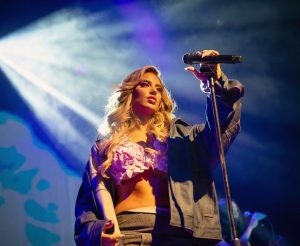

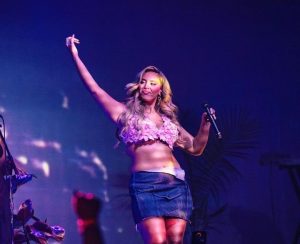
Canon 300mm F/2.8: (High-performance sports lens at about 1/2 the price of the 400mm)
Picture this: a moonlit basketball court, packed stands, and the tension so thick you could cut it with a knife.
I had been assigned to capture the city’s Midnight Basketball Championship, a tournament held under the stars, where emerging athletes showcased their raw talent.
Stadium lights tried their best, but shadows played cheeky tricks on the court.
However, what could’ve been a nightmare turned into a dream shoot?
And no, it wasn’t just my skills but the silent knight in my gear, the Telephoto Canon 300mm F/2.8 lens.
Phenomenal Bokeh
With its Two Fluorite Elements and Rounded 9-blade Diaphragm, this lens crafted a bokeh to die for.
Every drop of sweat, every tattoo, every intense gaze of a player was spotlighted, giving a 3D effect to my pictures.
It seamlessly separated the subject from the background, making the players pop against a dreamy backdrop.
This shot was my favorite one; the amount of details was pure perfection.
Background Blur
In the fast-paced world of sports, you don’t just capture the action; you narrate a story of unparalleled hard work and dedication.
This lens’s Aperture Range from f/2.8 to f/32 blurring out the distractions.
Every slam dunk, every dribble, every triumphant leap was set against a beautifully blurred background, creating a dramatic effect where the athletes took center stage.
Focus very quickly and quietly.
As a sports photographer, moments fly by.
Miss it by a second, and it’s gone forever.
But thanks to this lens’s Ring-Type Ultrasonic Motor AF System, focusing was as fast as the athletes on the move.
What’s more?
It was whisper-quiet, ensuring I was the silent observer, not a distraction.
Why This Lens is Best for Low Light Photography
When dancing with shadows, the Canon 300mm F/2.8 is your perfect partner.
The lens’s Optical Image Stabilizer ensures clarity even when your subject is a sprinting athlete.
Its Sub Wavelength Coating minimizes flare, letting you harness whatever light is available, be it a distant streetlamp or the sparkle from the scoreboard.
Conclusion
The whistle blew, and the game ended, but the memories I captured are immortal.
With every click, the Canon 300mm F/2.8 painted pictures, emotions, triumphs, and tales of the night.

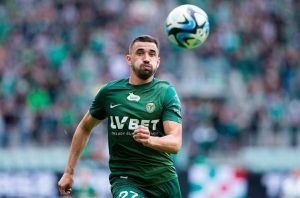
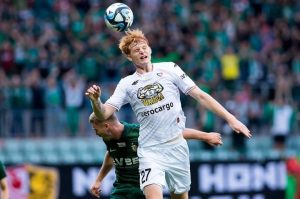
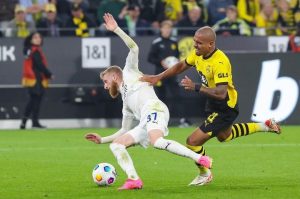


CONCLUSION:
Alright, guys, that concludes all the lenses we will discuss today in this article.
Do you guys have any experience with these lenses? What are your thoughts on them?
Which is your Best low light lens for Canon?
Would you please leave your thoughts and comments below?
Related posts:
Best Canon Camera for Low Light Video:
I am a Professional and Certified Digital Photographer born in the USA. I have been in this field of photography for 22 years, and in these years, I have used many photography lenses and Cameras, which I want to share here on this website about my experience. The idea for Bestoflens.com is to provide honest information about different Lenses and Camera products in the format of a “Best lenses for AYZ” list. I want this website to be the last destination for people to pick the best Cameras and lenses to fit their needs. You can find our unbiased reviews here on Bestoflens.

